 W
WThe broadfin sawtail catshark is a common species of catshark, part of the family Scyliorhinidae. It is found on or near the bottom at depths of 150–540 m (490–1,770 ft), from southeastern Japan to the East China Sea. A slender species growing to 68 cm (27 in) long, this shark is characterized by a fairly long, pointed snout, a series of indistinct, dark saddles along its back and tail, and a prominent crest of enlarged dermal denticles along the dorsal edge of its caudal fin. In addition, adult males have very long claspers that reach past the anal fin. The broadfin sawtail catshark is an opportunistic predator of bony fishes, cephalopods, and crustaceans, with immature and mature sharks being primarily piscivorous. It is oviparous and reproduces year-round. The International Union for Conservation of Nature (IUCN) presently lacks the information to assess the conservation status of this species.
 W
WChrysiptera talboti, known commonly as Talbot's damselfish and Talbot's demoiselle, is a species of damselfish. It is a marine fish from the eastern Indian Ocean and western Pacific. The specific name honours the fisheries scientist Frank H. Talbot the director of the Australian Museum in Sydney, the collector of the type.
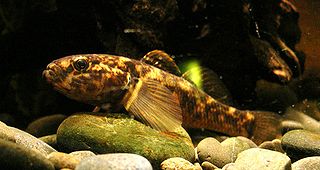 W
WThe common bully, or toitoi (Māori), is a fish endemic to New Zealand, and is present throughout the country. There are three other bully species that can be confused with common bullies. There are few characteristics of the common bully that separate it from other species. Vertical lines present on the cheek are a good defining characteristic, along with the location of head pores and scale patterns on the head although these are hard to establish when seen in the wild. It is an amphidromous fish meaning it is able to survive in marine and fresh water environments. It is a small fish only growing as big as 15 cm. It can live in marine, fresh water or brackish water habitats and generally lives in benthic zones. Some populations venture into the sea and occur in coastal rivers and streams while other land-locked populations have established in many shallow mainland lakes. They generally prefer moderate to slow moving water which means they are the most likely bully species to be sighted. Its diet consists mainly of small benthic invertebrates but also involves insect larvae and crustacea.
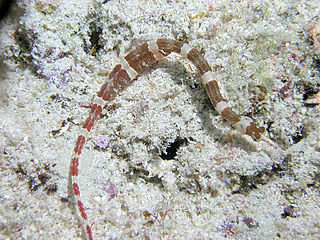 W
WCorythoichthys amplexus, known commonly as the brown-banded pipefish, is a species of marine fish in the family Syngnathidae.
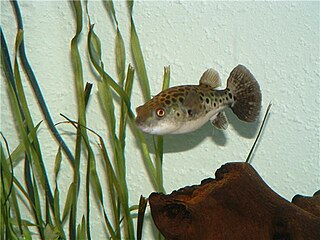 W
WDichotomyctere sabahensis is a species of pufferfish endemic to the southeast Asian island of Borneo. This species grows to a standard length of 10.8 cm (4.3 in).
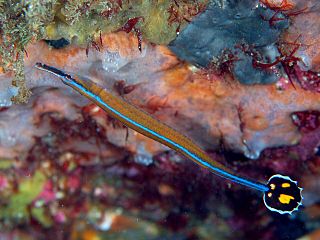 W
WDoryrhamphus japonicus, or the Honshu pipefish, is a species of flagtail pipefish from the genus Doryrhamphus that occurs in the Western Pacific Ocean, from Milne Bay, Papua New Guinea, to Sulawesi, Indonesia, the Philippines, and north as far as Honshu, Japan and Korea. It is a marine demersal pipefish that inhabits coastal lagoons, rocky and coral reefs, and tidal pools down to as deep as 30 metres (98 ft) but it is unusual below 10 metres (33 ft). This species is frequently found in association with sea urchins of the genus Diadema and with sponges. It is an active cleaner, feeding on parasites found on other fishes. It frequently shares crevices with shrimps, large mud crabs and occasionally moray eels.
 W
WThe Florida sand darter is a species of freshwater ray-finned fish, a darter from the subfamily Etheostomatinae, part of the family Percidae, which also contains the perches, ruffes and pikeperches. It is endemic to Gulf Coast drainages from the Aplalachicola to the Perdido River in Florida and southern Alabama. It inhabits streams with waters that are clear to tannin-stained where there are shifting sand bottoms and a moderate to fast flow. It is most frequently encountered where there is a moderate current in medium-sized to large streams, but it will enter smaller streams on occasion. Its appearance is identical to the naked sand darter aside from 2 black bands on each dorsal fin. This species can reach a length of 7.1 cm (2.8 in), though most are only about 4.7 cm (1.9 in) in length, at depths of 61 to 122 centimetres. The Florida sand darter was first formally described in 1975 by James D. Williams with the type locality given as the Choctawhatchee River, 2.4 kilometres (1.5 mi) west of Pittman, Florida. This species forms a clade with the naked sand darter the Western sand darter.
 W
WGenicanthus bellus is an angelfish that occasionally makes its way into the aquarium trade. Its common names are the bellus angelfish and ornate angelfish.
 W
WGenicanthus personatus is a species of marine angelfishes in the genus, Genicanthus. It is known as the masked angelfish. This species is marine, found around the Hawaiian Islands and is associated with coral reefs. It is found at a depth range of 23m - 174m. This species is more expensive than the Peppermint angelfish in the aquarium trade.
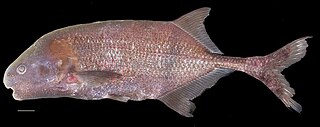 W
WIvindomyrus opdenboschi is a species of elephantfish in the family Mormyridae. It is only found in the Ivindo River in Gabon. It reaches a length of about 27.4 cm (10.8 in).
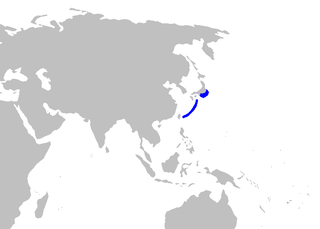 W
WThe Japanese catshark is a catshark of the family Scyliorhinidae, found in the northwest Pacific off Chiba Prefecture, Honshū, Japan, between 36 and 34°N. This shark has a relatively slender body, with the trunk tapering towards the head. Its snout is moderately long, bell-shaped, and broad; the preoral snout is about 7 to 8% of total its length. It has large gill slits, rather small eyes in adults, nostrils fairly broad, and a long broad, arched mouth. It is commonly taken by trawl off the type locality, and possibly used for oil, human consumption, and fishmeal or fish cakes locally.
 W
WJulidochromis dickfeldi is a species of cichlid endemic to Lake Tanganyika in Africa where it is only known from the southwestern portion. This species inhabits areas with rock/rubble substrates, each fish maintaining a territory around a crevice or crack. This species reaches a length of 11 centimetres (4.3 in) TL. The specific name honours the German fishkeeper Alf Dickfeld who proposed the expedition on which the type was collected.
 W
WThe lined catshark or banded catshark is a species of catshark, belonging to the family Scyliorhinidae. It is found in the waters off the coasts of Beira, Mozambique, to East London, and South Africa between latitudes 19°S and 31°S, from the surface to 290 m. It can grow up to 56 cm in length.
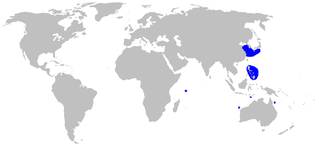 W
WThe longhead catshark or smoothbelly catshark is a species of catshark, family Scyliorhinidae, with a patchy distribution in the Indo-Pacific from Mozambique to southern Japan to northern Australia. It is found in water between 500 and 1,140 m deep. This species grows to 59 cm (23 in) long and is characterized by its extremely long and narrow snout, short abdomen, and long anal and caudal fins. In addition, a large area of the anterior ventral portion of its body lacks dermal denticles. The longhead catshark is oviparous and the only known cartilaginous fish that is normally hermaphroditic, with the majority of individuals having both the functional reproductive organs of one sex and the undeveloped reproductive organs of the opposite sex.
 W
WMelanochromis loriae is a species of cichlid in the Cichlidae endemic to Lake Malawi. This species can reach a length of 12.5 centimetres (4.9 in) TL.
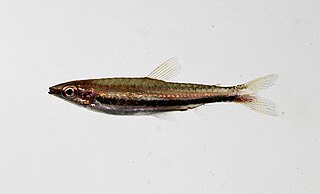 W
WNannostomus marilynae,, commonly known as Marilyn's or greenstripe pencilfish, is a freshwater species of fish belonging to the characin family Lebiasinidae. They have been recorded from the Rio Negro and Rio Orinoco regions of Brazil, Venezuela, and Colombia.
 W
WThe New Zealand black angelfish or the black scalyfin, Parma alboscapularis, is a damselfish of the family Pomacentridae, found around northeastern New Zealand to depths of a few metres, over shallow rocky reef areas. Its length is between 24 and 28 cm.
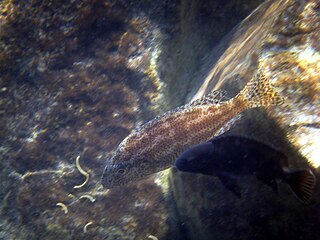 W
WNimbochromis linni is a species of cichlid endemic to Lake Malawi where it prefers areas with rocky substrates, though it occasionally enters intermediate habitats. This species can reach a length of 25 centimetres (9.8 in) TL. It can also be found in the aquarium trade. The specific name honours D. Wayne Linn of the Fisheries Office in Malawi, whose help to Herbert R. Axelrod made his field trip to Lake Malawi possible.
 W
WThe peaceful betta or crescent betta, Betta imbellis, is native to Southeast Asia, where it occurs naturally in Southern Thailand, Malaysia, and Indonesia, and has been introduced to Singapore. It is an inhabitant of stagnant waters in swamps, rice paddies, ditches, and pools. This species grows to a length of 6 cm (2.4 in). It is found in the aquarium trade.
 W
WPolylepion cruentum is a species of marine ray-finned fish from the family Labridae, the wrasses. This benthopelagic species occurs near reefs in deep water in the North Pacific Ocean. It is found at depths of 100 to 353 metres. Its range extends from Okinawa east to the Society Islands and Hawaii. This species was first formally described as Bodianus russelli by Martin F. Gomon and John E. Randall in 1975 with the type locality given as Moku Manu near Oahu in Hawaii. When Gomon described the new genus Polylepion in 1977 he designated P. russelli as its type species. The specific name of this fish honours Peter E. Russell of Kaneoke on Oahu who collected and gave the holotype to the Bishop Museum in Honolulu.
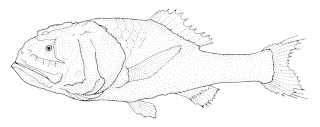 W
WPoromitra oscitans, the yawning, is a fish of the family Melamphaidae, found in tropical and subtropical waters of the indo-Pacific region. It grows to a length of 8.2cm SL, and lives at a depth of 643-5320m.
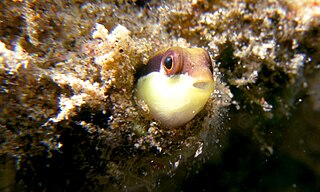 W
WPseudochromis sankeyi, the striped dottyback, is a species of ray-finned fish from the Western Indian Ocean which is a member of the family Pseudochromidae. It occasionally makes its way into the aquarium trade. It grows to a size of 7 cm in length. The specific name honours the British collector and wholesaler of marine fish Richard D. Sankey, who gave Roger Lubbock study specimens.
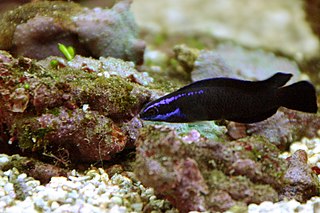 W
WPseudochromis springeri, also known as blue-striped dottyback, is a popular saltwater aquarium fish from the red sea and eastern Indian Ocean. The specific name honours the American ichthyologist Victor G. Springer of the Smithsonian Institution.
 W
WTortonese's stingray is a species of stingray in the family Dasyatidae, endemic to the Mediterranean Sea. It may be the same species as the common stingray.
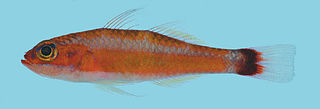 W
WTrimma caudomaculatum, the blotch-tailed pygmygoby , is a species of goby from the Western Pacific. Like other members of the genus, they are usually found in large schools in the sloping or vertical drop-offs at coral reef edges. Similar to other species of Trimma this species consists of multiple cases of bidirectional sex change, meaning that if a group is lacking in a specific sex a partial amount of the group can change their undeveloped gonad structure of the opposite sex in order to accommodate. This sex change is made possible due to the females having a developed set of ovaries with female hormones that are developed, and a set of testis and male hormones that are underdeveloped; The males follow a similar set up in vice versa, so their testis and male hormones are developed, while the ovaries and female hormones are underdeveloped.